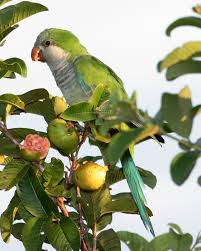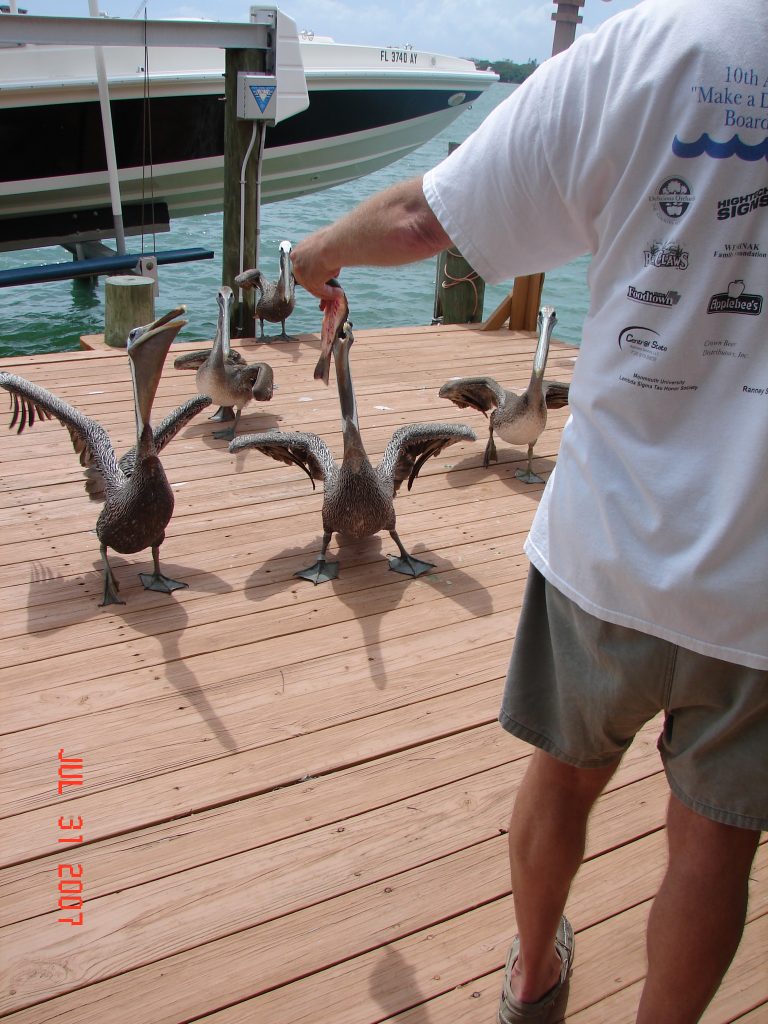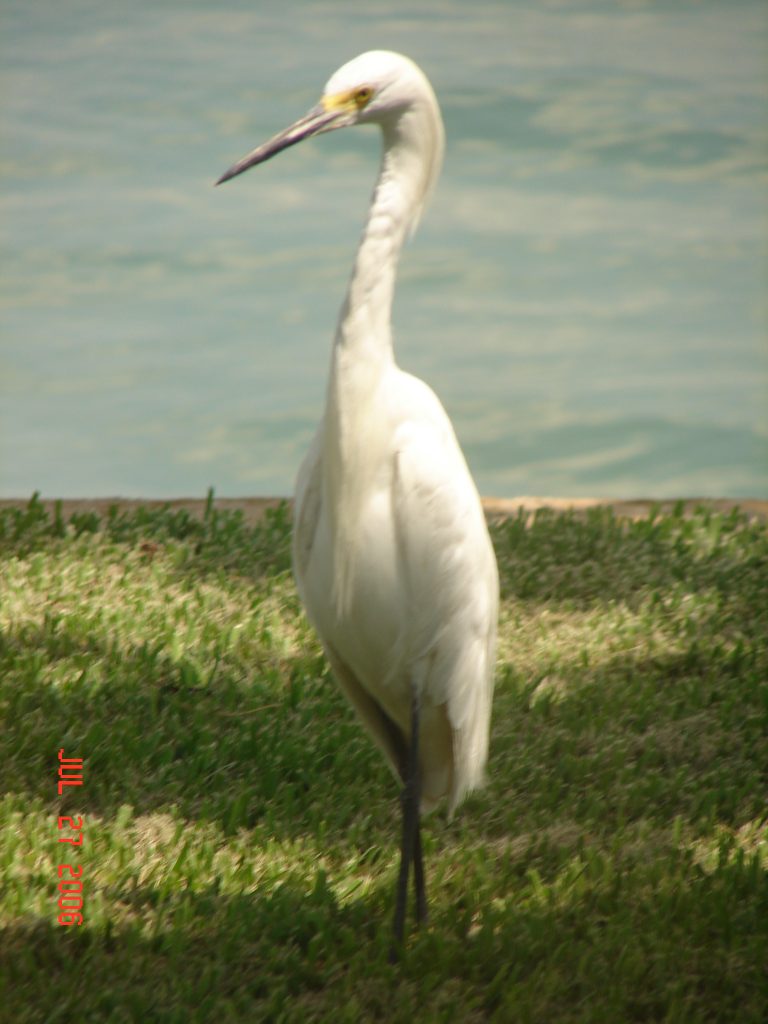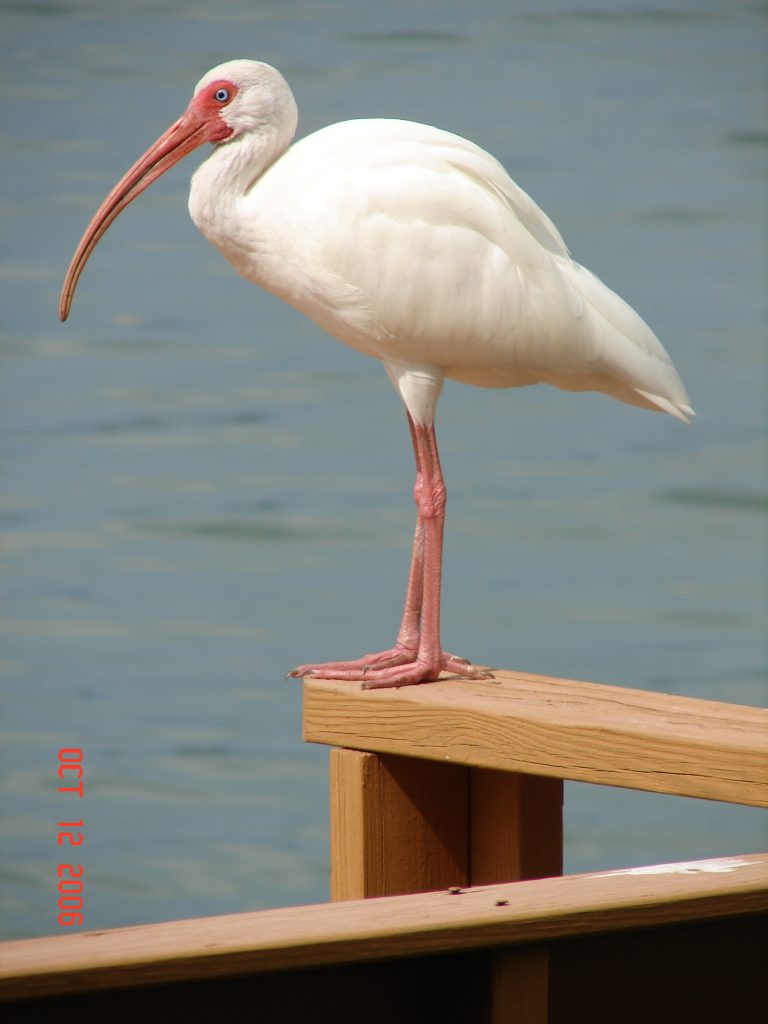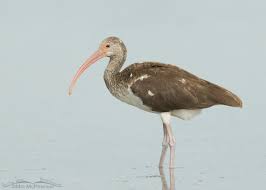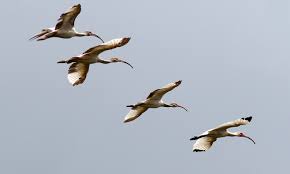by Doug Becker
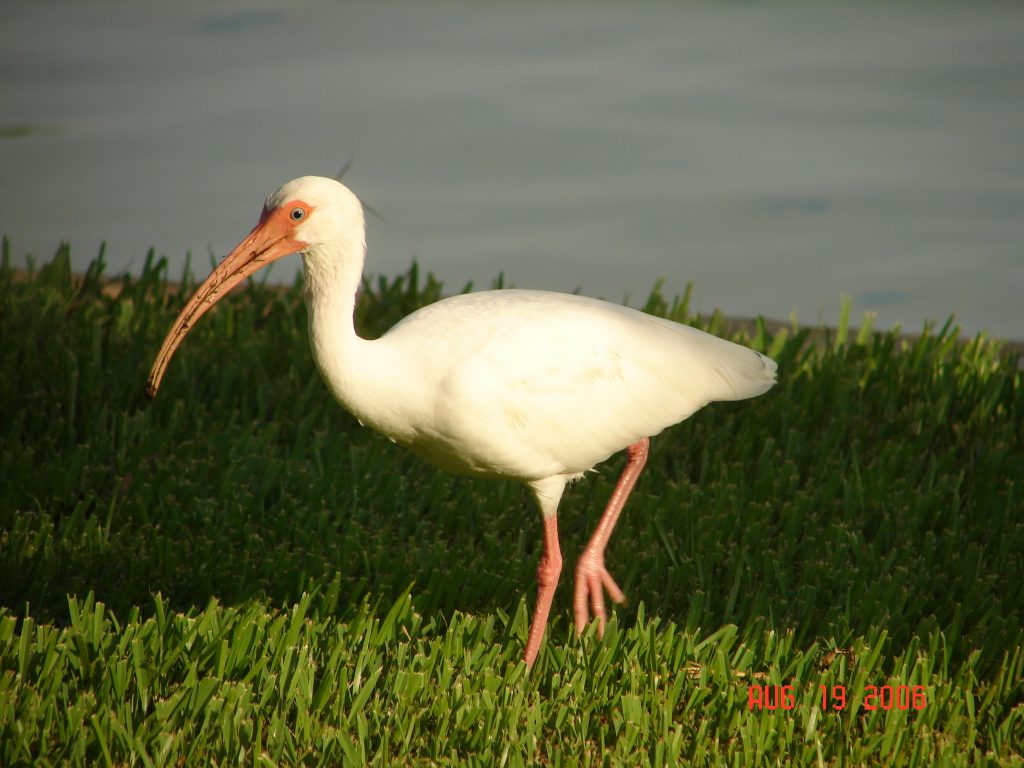
A number of years ago we moved our family from the upper Midwest to the beaches of St. Petersburg, Florida. Even as an active birder “up-north”, I had no idea of the variety of exotic and wonderful birds that would be in our yard everyday. Some of the first birds that held my attention were a group of big white birds with long red legs and very long, curved, red bills. These tropical looking birds were White Ibis. They kinda looked like chickens rapidly pecking at the grass. The White Ibis would come in groups of ten or more, and systematically forage my lawn for bugs and insects. I’d never seen anything like them. Welcome to Florida!
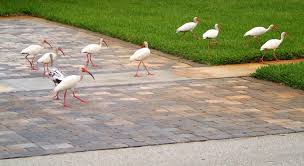
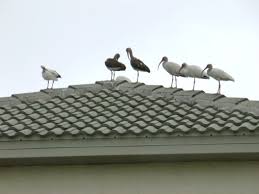
The White Ibis ranges only throughout the southeastern coastal regions of the U.S. the Caribbean islands, and Gulf shores of Mexico. Wetlands and marshes make home to flocks of Ibis as well as open fields and parks. The Ibis is a wader. His long legs are perfect for wading through shallow water, and his long, curved bill is perfect for probing the muddy water for insects and crustaceans. In wet areas where many waders collect, the White Ibis stands out with his all bright-white color save the black tips of the wing. Their short flights make a “V” shape formation, and it’s not uncommon to see a single southern pine or cypress filled with White Ibis. In flight, their long neck and bill extend straight out and their long legs trail straight back. A group of Ibis is called a “congregation”, a “stand”, or a “wedge”. I just call them a “bunch”. These birds are obvious and easy to identify.
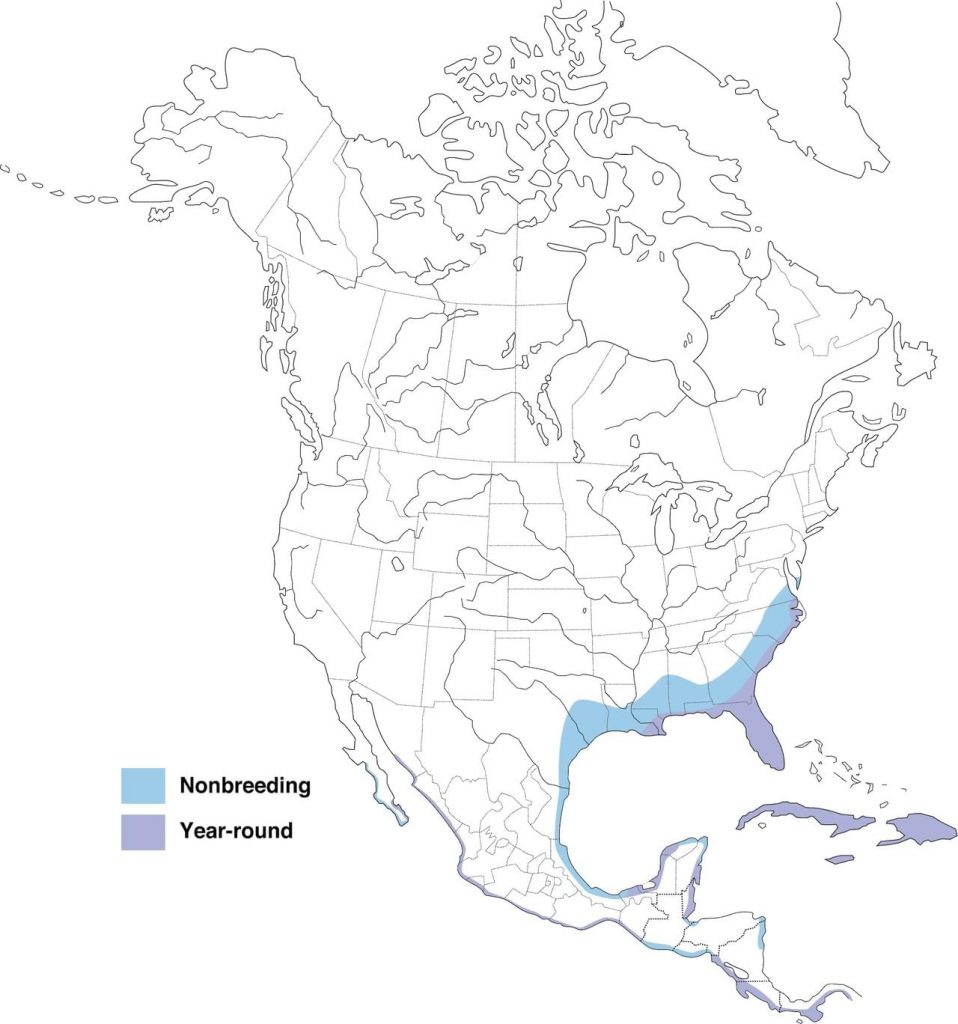
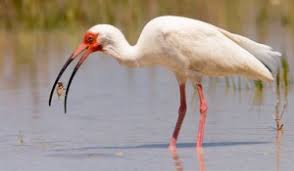
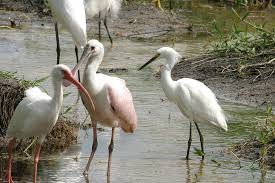
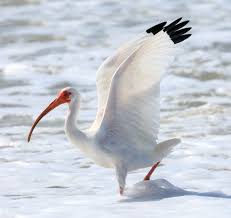

White Ibis nest together in colonies. The female picks the location, and the male brings the nesting material to the female for building the nest. Nests are built in forks of trees, and usually 12 feet, or less, off the ground. Sometimes nests are built in hedges, or even in the grasses on the ground. Nests are made mostly with sticks. The female weaves these sticks into a sloppy platform of 2-4 inches high, and 10 inches wide. The nest is maintained throughout the nesting cycle while the White Ibis raise up to three babies per breeding season. The parents take turns sitting on the eggs, and greet each other with deep bows when “changing guard”. Once the chicks hatch, they will stay with the parents for about 48 days. The number of broods vary relative to food sources. A colony can consist of many birds, and the entire colony will move each year if food sources run low.
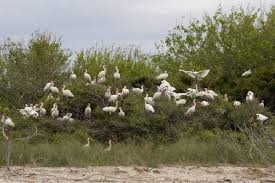
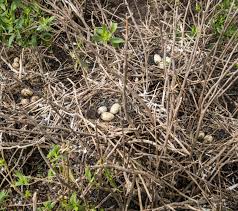

Need a new birding vacation? C’mon down to Florida. There are wild Parrots in the trees, Pelicans on the dock, Blue Herons and White Egrets looking at you through the screened door, and White Ibis foraging the lawn. Bring a quality camera, your best binoculars, a Sibley’s or Peterson’s field guide, and good sunglasses. Your first mission is to find the White Ibis, and that should be easy! Second mission? Find the Glossy Ibis. That can be a little harder. Ha! Good luck. I’ll see ya out there.
